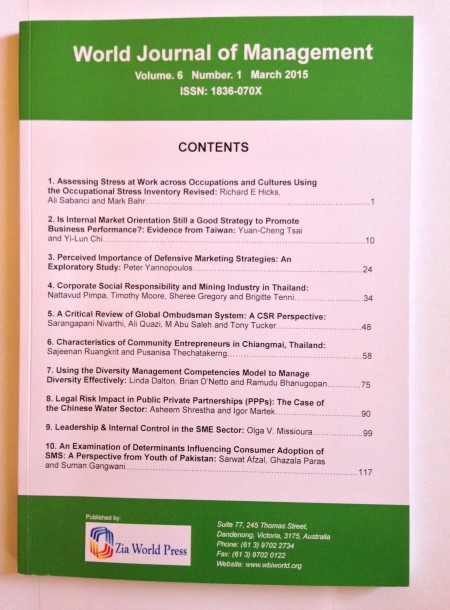Assessing Stress at Work across Occupations and Cultures Using the Occupational Stress Inventory Revised
Assessing Stress at Work across Occupations and Cultures Using the Occupational Stress Inventory Revised
Workplace stress is common across occupations and across nations. However, there has been limited research examining the similarities and differences across cultures, and none that seem to have used a direct comparison across one professional area using the same extensive and validated questionnaire. One such questionnaire is the Occupational Stress Inventory-Revised (OSI-R: Osipow 1998) which assesses three main dimensions related to stress: “occupational roles” (stressors), “personal strain” (experienced stress), and “personal resources” (coping resources). The current study examined a cross-national application of the OSI-R among Australian and Turkish teachers to identify whether patterns of latent structure of the OSI-R were similar (and therefore whether the questionnaire would be useful in wider research and professional application). Structural equation modeling and fit indices results generally confirmed the three-dimensional model posited by Osipow and also suggested that the occupational role stress dimension could be subdivided: the similar latent factor results obtained across cultures for the teacher samples suggesting the stability of the OSI-R in this cross-cultural workplace setting. The general implications for research and practice are discussed.Field of Research: Management

